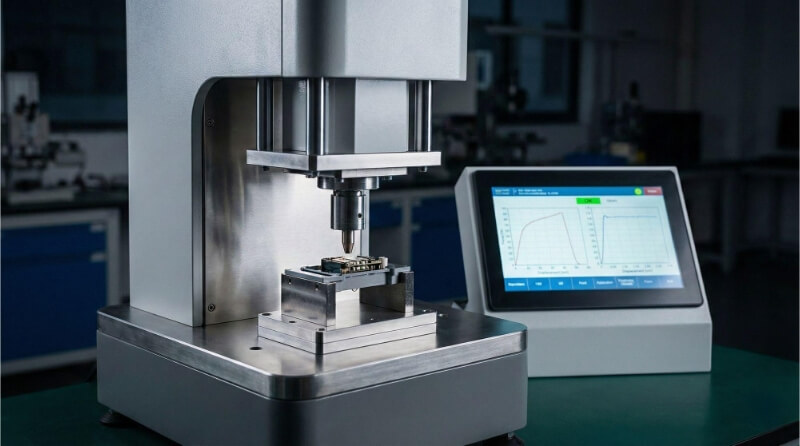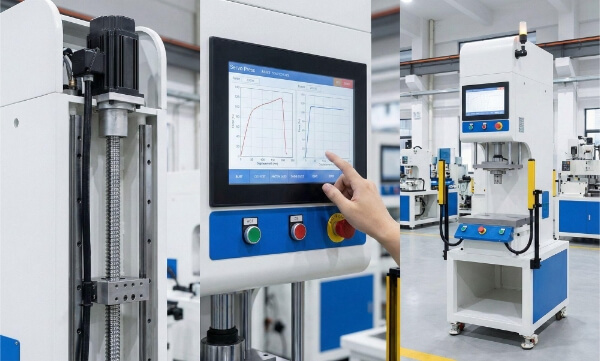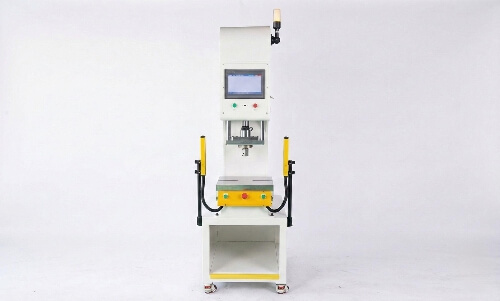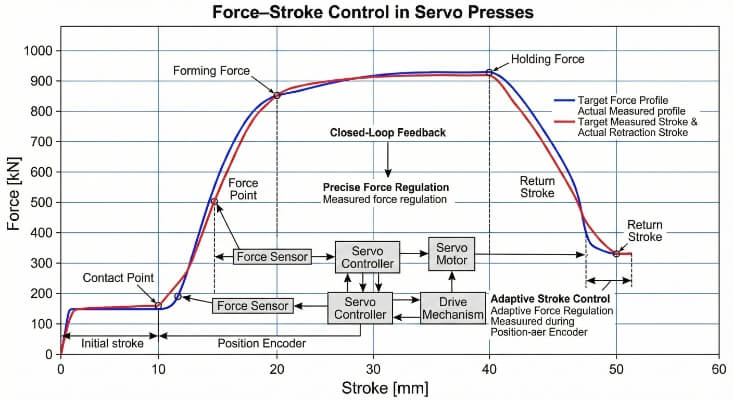Die Wahl eines Materials, das sich biegen und formen lässt, ohne zu brechen, ist bei der Arbeit mit Metall unerlässlich. Viele Ingenieure und Designer benötigen Teile, die Druck, Dehnung oder Biegung während der Produktion und des täglichen Gebrauchs aushalten. Wenn Sie die Verwendung von Aluminium in Betracht ziehen, sollten Sie sich eine wichtige Frage stellen: Lässt sich Aluminium biegen, ohne zu brechen, und ist es flexibel genug für das Umformen, Pressen oder Ziehen?
Aluminium hat eine einzigartige Mischung aus Festigkeit und Flexibilität. Seine Duktilität kann sich je nach Sorte, Form und Verarbeitung ändern. Sehen wir uns an, was Aluminium duktil macht und wie Sie diese Eigenschaft für Ihr nächstes Projekt nutzen können.
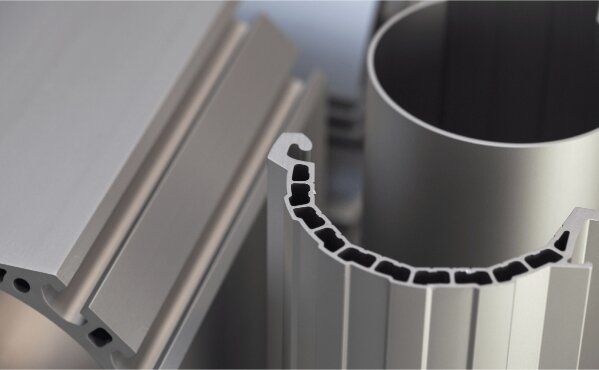
Was ist Duktilität?
Die Duktilität gibt an, wie viel Dehnung ein Metall aushalten kann, bevor es bricht. Das ist etwas anderes als Härte oder Festigkeit. Ein Metall kann weich und dennoch sehr dehnbar sein. Oder es kann stark und spröde sein und unter Druck brechen. Duktile Metalle haben eine hohe "Dehnung", d. h. sie können sich stärker dehnen, bevor sie versagen.
Durch die Duktilität lässt sich Aluminium leichter bearbeiten. Sie ermöglicht Verfahren wie Biegen, Ziehen, Stanzen oder Walzen. Diese Formgebungsverfahren hängen davon ab, wie sehr sich ein Metall bewegen kann, ohne zu reißen.
Für Ingenieure wirkt sich die Duktilität darauf aus, wie sich ein Teil in der Produktion und während des Gebrauchs verhält. Ein duktiles Material kann Spannungen absorbieren und mit Formveränderungen umgehen. Es ist auch resistent gegen Risse bei plötzlichem Druck oder Vibrationen.
Grundlegende Eigenschaften von Aluminium
Aluminium ist dafür bekannt, dass es leicht und einfach zu formen ist. Aber warum verhält es sich auf diese Weise? Es liegt an seiner atomaren Struktur und daran, wie die verschiedenen Elemente gemischt sind.
Zusammensetzung und Struktur von Reinaluminium
Reines Aluminium besteht aus einer einzigen Art von Atomen, die in einer kubisch-flächenzentrierten (FCC) Kristallstruktur angeordnet sind. Diese Struktur ist sehr gleitfreudig, d. h. die Atomschichten können sich bei Krafteinwirkung übereinander bewegen.
Dies ist ein Grund dafür, dass reines Aluminium weich und sehr dehnbar ist. Es kann sich stark dehnen, bevor es bricht, hat aber selbst keine große Festigkeit, was seine Verwendung in anspruchsvollen Anwendungen einschränkt.
Gängige Aluminiumlegierungen
Die Hersteller fügen dem Aluminium andere Elemente hinzu, um die Festigkeit zu erhöhen. Dazu gehören Kupfer, Magnesium, Silizium, Zink oder Mangan. Diese zusätzlichen Elemente machen Aluminium härter und stärker.
Es gibt zwei Hauptgruppen von Aluminiumlegierungen:
- Knetlegierungen durch Walzen, Strangpressen oder Ziehen geformt.
- Gusslegierungen werden in Formen gegossen und verfestigt.
Jede Legierung hat ihre eigene Mischung aus Dehnbarkeit und Festigkeit. 1100er Aluminium ist zum Beispiel sehr dehnbar, aber weich. 6061 und 5052 sind immer noch duktil, aber stärker und nützlicher für Strukturteile.
Zugfestigkeit vs. Duktilität
Die Zugfestigkeit gibt an, wie viel Zugkraft ein Metall aushalten kann, bevor es bricht, während die Duktilität angibt, wie stark es sich dehnen oder verformen kann, bevor dies geschieht.
Mit zunehmender Zugfestigkeit nimmt die Duktilität oft ab. Stärkere Legierungen können mehr Belastung aushalten, dehnen sich aber in der Regel weniger. Weichere Sorten können sich stärker dehnen, können aber nicht so viel Last tragen.
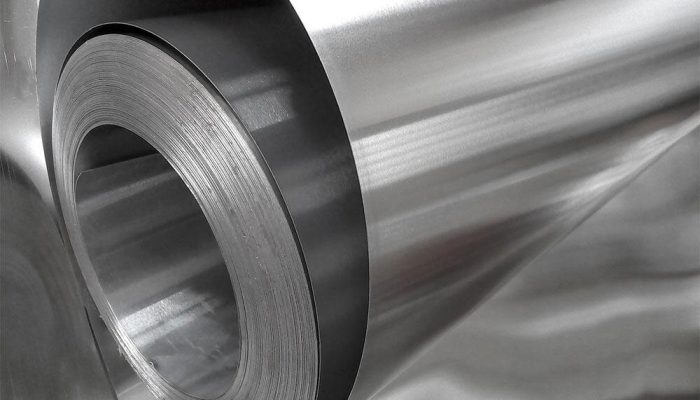
Ist Aluminium duktil?
Aluminium wird wegen seiner Formbarkeit häufig verwendet, aber wie stark es sich dehnen oder biegen lässt, hängt von seiner genauen Art ab. Vergleichen wir einmal reines Aluminium mit seinen Legierungen.
Duktilität von Reinaluminium
Reines Aluminium ist sehr dehnbar. Es kann sich bis zu 50% seiner ursprünglichen Länge dehnen, bevor es bricht, was es für das Tiefziehen, Drückwalzen und andere Umformverfahren sehr nützlich macht.
Seine atomare Struktur ermöglicht es, dass Atomschichten leicht aneinander vorbeigleiten können. Deshalb lässt es sich biegen, ohne zu brechen. Reines Aluminium ist jedoch weich, weshalb es nicht für hochfeste Teile verwendet wird. Es eignet sich hervorragend für Anwendungen, bei denen Form und Flexibilität wichtiger sind als die Tragfähigkeit.
Einfluss der Legierung auf die Duktilität
Wenn Aluminium zur Herstellung von Legierungen mit anderen Elementen versetzt wird, sinkt in der Regel die Duktilität, aber die Festigkeit steigt. Dieser Kompromiss trägt dazu bei, dass sich das Metall für anspruchsvollere Aufgaben eignet.
Zum Beispiel:
- 6061 Aluminium hat eine gute Festigkeit und eine gute Duktilität. Es ist weit verbreitet in Rahmen und mechanische Teile.
- 5052 Aluminium ist weicher und dehnbarer. Es lässt sich leicht biegen und ist widerstandsfähig gegen Risse, was hervorragend ist für Gehege und Platten.
- 7075 Aluminium ist robust, hat aber eine geringe Dehnbarkeit. Es wird in der Luft- und Raumfahrt verwendet, wo Stärke wichtiger ist als Flexibilität.
Ja, Aluminium ist dehnbar, vor allem in seiner reinen Form. Der Grad der Duktilität hängt jedoch von der Legierung und ihrer Verarbeitung ab.
Messung der Duktilität von Aluminium
Um zu wissen, wie dehnbar Aluminium ist, müssen wir es testen. Ingenieure verwenden Standardtests, um festzustellen, wie stark sich ein Metall dehnen kann, bevor es bricht. Diese Tests liefern uns präzise Daten für die Konstruktion und die Materialauswahl.
Zugprüfung erklärt
Die Zugprüfung ist die gängigste Methode zur Messung der Duktilität. Eine Metallprobe wird in einer kontrollierten Maschine auseinandergezogen. Während sie sich dehnt, zeichnet die Maschine auf, wie viel Kraft aufgebracht wird und wie weit sich die Probe erstreckt, bevor sie bricht.
Streckgrenze und Dehnung
Die Streckgrenze ist der Punkt, an dem das Metall beginnt, sich zu dehnen, ohne zurückzuspringen. Er markiert den Beginn der plastischen Verformung.
Die Dehnung misst, wie sehr sich das Metall von Anfang bis Ende dehnt. Sie wird in der Regel als Prozentsatz angegeben. Ein Metall, das sich vor dem Bruch um 25% dehnt, hat zum Beispiel eine Dehnung von 25%. Eine höhere Dehnung bedeutet eine höhere Duktilität.
Interpretation von Spannungs-Dehnungs-Kurven
Die Ergebnisse eines Zugversuchs werden in Form einer Spannungs-Dehnungs-Kurve dargestellt. Anhand dieses Diagramms können wir erkennen, wie sich das Metall unter Belastung verhält.
- Die Kurve beginnt mit einer geraden Linie - das ist die elastische Zone.
- Wenn sich die Kurve krümmt, ist das der Renditepunkt.
- Danach dehnt sich das Metall mit geringerer Kraft weiter aus, bis es bricht.
Die Fläche unter der Kurve zeigt, wie viel Energie das Metall absorbieren kann. Eine längere Kurve bedeutet in der Regel eine bessere Duktilität.
Duktilitätsprüfverfahren
Neben der Zugprüfung können Ingenieure auch andere Verfahren anwenden:
- Biegeversuche: Das Metall wird in einem bestimmten Winkel gebogen, um es auf Risse oder Brüche zu prüfen.
- Schrumpftests: Ein Stempel drückt sich in ein Blech, um eine Kuppel zu formen und zu testen, wie weit es sich dehnen kann.
- Härte- und Zähigkeitstests: Sie geben Aufschluss darüber, wie dehnbar das Material ist, ersetzen aber keine Zugversuche.
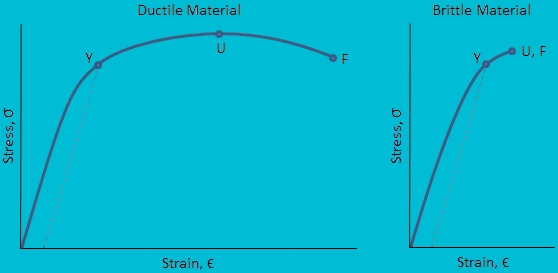
Faktoren, die die Duktilität von Aluminium beeinflussen
Die Duktilität von Aluminium ist nicht festgelegt. Sie kann sich in Abhängigkeit von verschiedenen Bedingungen ändern. Diese Faktoren wirken sich darauf aus, wie leicht es sich bei der Verarbeitung biegen, dehnen oder verformen lässt.
Temperatur
Die Duktilität nimmt mit der Hitze zu. Bei höheren Temperaturen bewegen sich die Aluminiumatome freier, wodurch sich das Metall leichter dehnen lässt, ohne zu brechen.
Die Warmumformung wird häufig zum Formen von Aluminiumteilen verwendet. Sie hilft, Risse zu vermeiden, insbesondere bei komplexeren Legierungen. Kalte Temperaturen hingegen verringern die Duktilität und erhöhen die Wahrscheinlichkeit, dass Aluminium unter Belastung reißt.
Zusammensetzung der Legierung
Verschiedene Legierungselemente beeinflussen die Duktilität auf unterschiedliche Weise. Einige Elemente, wie Magnesium oder Silizium, erhöhen die Festigkeit, verringern aber die Dehnbarkeit.
Zum Beispiel ist 1100er Aluminium (fast rein) sehr dehnbar. 6061 hat eine geringere Duktilität, aber eine bessere Festigkeit. 7075 ist stark, lässt sich aber nur begrenzt verformen.
Dehnungsrate
Die Dehnungsgeschwindigkeit gibt an, wie schnell Sie Kraft anwenden. Wenn Sie Aluminium langsam dehnen, verformt es sich in der Regel leichter. Wenn Sie es schnell ziehen, hat das Metall weniger Zeit, sich anzupassen, und kann reißen.
Bei Umformvorgängen führt eine langsamere Dehnungsrate oft zu besseren Ergebnissen. Bei der Hochgeschwindigkeitsumformung sind unter Umständen spezielle Einstellungen erforderlich, um Fehler zu vermeiden.
Struktur der Körner
Die Korngröße beeinflusst, wie sich ein Metall unter Belastung bewegt. Feine Körner ermöglichen eine gleichmäßigere Bewegung, während grobe Körner ungleichmäßige Verformungen und Risse verursachen können.
Verarbeitungsmethoden wie Walzen oder Glühen tragen zur Kontrolle der Korngröße bei. Feinkörniges Aluminium hat in der Regel eine bessere Verformbarkeit.
Wärmebehandlung
Die Wärmebehandlung kann die innere Struktur von Aluminium verändern. Das Glühen macht das Metall weicher und erhöht die Duktilität. Die Lösungsglühung und die Alterung erhöhen die Festigkeit, können aber die Verformbarkeit verringern.
Einige Zustände, wie O (geglüht), bieten eine hohe Dehnbarkeit. Andere, wie T6 (lösungsgeglüht und gealtert), sind härter und weniger flexibel.
Kaltverfestigung
Wenn Aluminium verformt wird, wird es härter. Dies wird als Kaltverfestigung bezeichnet. Sie erhöht die Festigkeit, verringert aber die Duktilität.
Eine zu starke Umformung ohne Glühen kann das Metall spröde machen. Deshalb durchlaufen manche Teile mehrere Umform- und Erweichungsschritte, die dazu beitragen, die Verformbarkeit während der Produktion zu erhalten.
Vorteile und Nachteile
Die Duktilität von Aluminium hat viele Vorteile, aber es gibt auch Kompromisse. Wenn Sie beide Seiten kennen, können Sie das richtige Material für Ihre Anwendung auswählen.
Vorteile
- Leicht zu formen: Aluminium-Biegungenzieht und drückt gut, besonders in reiner oder weicher Form.
- Geeignet für komplizierte Formen: Seine Flexibilität ermöglicht TiefziehenSpinnen, oder Stempeln ohne Rissbildung.
- Leicht: Sie erhalten Verformbarkeit ohne das Gewicht von Stahl oder anderen Metallen.
- Nachbearbeitungsfreundlich: Wenn die Umformung nicht wie geplant verläuft, kann duktiles Aluminium oft ohne Schaden umgeformt werden.
- Risswiderstand bei der Umformung: Duktiles Aluminium widersteht Kantenrissen beim Biegen oder Stanzen.
Nachteile
- Geringere Stärke in reiner Form: Hohe Duktilität bedeutet oft geringe Festigkeit. Reines Aluminium kann keine schweren Lasten tragen.
- Eingeschränkter Einsatz in stark beanspruchten Bereichen: Duktile Aluminiumlegierungen können sich unter Belastung verformen, wenn sie nicht richtig ausgewählt werden.
- Möglicherweise sind zusätzliche Schritte erforderlich: Für hochfeste Teile müssen Sie möglicherweise Aluminium wärmebehandeln oder legieren, was zusätzliche Kosten verursacht.
- Oberflächenmarkierungen: Duktile Werkstoffe können bei starker Umformung leichter Spuren oder Verformungen aufweisen.
- Risiko der Arbeitsverhärtung: Wenn sie nicht geglüht werden, können mehrere Biegungen oder Formgebungsschritte die Duktilität mit der Zeit verringern.
Vergleich mit anderen Metallen
Aluminium wird oft mit Metallen wie Stahl und Kupfer verglichen, wenn es um die Auswahl von Werkstoffen für Form- oder Strukturteile geht. Hier eine kurze Gegenüberstellung, um Ihnen die Entscheidung zu erleichtern.
| Eigenschaft | Aluminium | Stahl | Kupfer |
|---|---|---|---|
| Dichte (g/cm³) | 2.7 | 7.8 | 8.9 |
| Duktilität | Hoch | Mittel bis niedrig | Hoch |
| Verhältnis Stärke/Gewicht | Hoch | Mittel | Niedrig |
| Korrosionsbeständigkeit | Gut (bildet natürlich eine Oxidschicht) | Niedrig (muss beschichtet werden) | Gut |
| Formbarkeit | Exzellent | Gut | Gut |
| Wärmeleitfähigkeit | Hoch | Mittel | Sehr hoch |
| Elektrische Leitfähigkeit | Gut | Niedrig | Exzellent |
| Verarbeitbarkeit | Leicht zu bearbeiten und zu formen | Schwerer zu bearbeiten | Weich und leicht zu formen |
Anwendungen, bei denen Duktilität von entscheidender Bedeutung ist
In vielen Branchen spielt die Fähigkeit von Aluminium, sich zu biegen und zu dehnen, ohne zu brechen, eine wichtige Rolle für Produktdesign und Leistung. Hier sind einige Bereiche, in denen Duktilität wichtig ist.
Komponenten für die Luft- und Raumfahrt
In der Luft- und Raumfahrt sind die Teile hohen Belastungen, Vibrationen und Temperaturschwankungen ausgesetzt. Aluminiumlegierungen mit guter Duktilität helfen, Stöße zu absorbieren und Risse zu vermeiden. Sie werden in Flügelhäuten, Rumpfplatten und Innenrahmen verwendet. Diese Teile müssen leicht sein und sich unter Belastung leicht verformen können, ohne zu versagen.
Karosseriebleche
Autokarosserien benötigen Metall, das sich beim Stanzen leicht biegen lässt, aber nach dem Umformen seine Form behält. Duktiles Aluminium ermöglicht tiefe Einzüge und scharfe Kurven in Türen, Hauben und Verkleidungen. Außerdem trägt es zur Verringerung des Fahrzeuggewichts bei, was die Kraftstoffeffizienz und die Leistung verbessert.
Gehäuse für Unterhaltungselektronik
Für Handys, Laptops und Tablets werden dünne Aluminiumabdeckungen verwendet, die ein sauberes Aussehen und ein solides Gefühl vermitteln. Diese Gehäuse werden durch Stanzen oder Extrusion. Die Duktilität sorgt dafür, dass das Metall auch bei sehr dünnen Dicken ohne Rissbildung in präzise Formen gebracht werden kann.
Schlussfolgerung
Aluminium ist ein dehnbares Metall. Es lässt sich unter Krafteinwirkung gut biegen, strecken und verformen, insbesondere in reiner oder weicher Form. Seine Duktilität hängt von der Art der Legierung, der Temperatur und der Verarbeitungsmethode ab. Diese Flexibilität macht Aluminium zur ersten Wahl für Teile, die ohne Rissbildung geformt werden müssen.
Sie benötigen Aluminiumteile, die Präzision und Flexibilität erfordern? Senden Sie uns Ihre Zeichnungen oder Projektdetails - Unser Team hilft Ihnen bei der Auswahl der richtigen Legierung und des richtigen Verfahrens für Ihre Bedürfnisse.
Hey, ich bin Kevin Lee

In den letzten 10 Jahren bin ich in verschiedene Formen der Blechbearbeitung eingetaucht und teile hier coole Erkenntnisse aus meinen Erfahrungen in verschiedenen Werkstätten.
Kontakt aufnehmen

Kevin Lee
Ich verfüge über mehr als zehn Jahre Berufserfahrung in der Blechverarbeitung und bin auf Laserschneiden, Biegen, Schweißen und Oberflächenbehandlungstechniken spezialisiert. Als Technischer Direktor bei Shengen bin ich bestrebt, komplexe Fertigungsherausforderungen zu lösen und Innovation und Qualität in jedem Projekt voranzutreiben.

